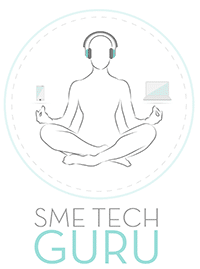While companies focus energy on optimising processes and productivity, they still overlook a crucial pairing. HR and payroll focus on employees, but traditionally, these are kept separate. Some of the reasons are systemic, embedded through business tradition. However, the other barrier has been technology, something that cloud-native services are changing.
Payroll’s strategic value
Paying employees is one of the oldest business functions, while modern human resource practices first appeared in the early 20th century. During that period, business leaders realised they could not take their people for granted. Replacing people became more costly than considering those already committed to the company’s culture and goals. As business maverick Sir Richard Branson once said, train people well enough so they can leave and treat them well enough so they don’t want to.
This attitude has made HR more strategically important over the decades. A more recent realisation is that payroll also holds considerable value for modern employee relations.
“I believe payroll is more than just a cost centre—it’s the nerve centre of any company, connecting employees with the business,” says Bruce van Wyk, CEO of PaySpace by Deel. “Payroll encompasses remuneration, benefits calculations, leave allocation, budgeting for salaries, and employee loans. Indirectly, it also affects talent management, employee wellbeing, and organisational efficiency. This crucial function ties directly into HR’s strategic goals of nurturing talent, fostering engagement, and building a healthy company culture.”
Business experts agree with this view. According to EY’s Global Payroll surveys, two-thirds of organisations have a formalised payroll strategy. Forbes’ effective employee retention strategies include competitive wages, retention-focused management, wellness-linked leave and sick pay, and competitive salary research.
Many of these are HR concerns, but payroll provides much of the relevant strategic insight. Closer integration between the two also reduces costly business complexities, says Van Wyk:
“Some tasks associated with payroll are straightforward but impactful, such as generating payslips for employees to use in various situations, like opening a bank account. But others, like managing compliance across multiple regions or adapting to changes in employment laws, can be complex. When payroll and HR teams operate independently, they often face friction—especially in global organisations managing varied payroll cycles, worker types, and regulatory landscapes.”
Integrating HR and Payroll with Cloud-Native Technology
HR gains substantially when it can access reliable payroll data, preferably in real time. This data contains information such as salaries, bonuses, leave, loans, flexible working arrangements, and dependents. It reveals the layout of departments and teams across different regions.
Normally, HR departments would have to wait for month-end payroll runs to access such information. However, modern digital cloud payroll platforms give them real-time access to payroll data, reports, and dashboards.
“The solution lies in real-time, cloud-native payroll technology. When payroll systems evolve from routine processing to real-time data-driven insights, the potential for HR transformation becomes clear. With tools like PaySpace, HR and payroll teams no longer need to operate on different timelines or scramble at the end of the month to process payroll data,” says Van Wyk.
Payroll systems had remained isolated because they were hard to integrate with other business areas. Payroll processes are demanding, time-intensive, and typically focused on small windows during the work month. These attributes came to define payroll software as rigid and monolithic.
But cloud-native platforms have liberated software. A cloud platform is naturally agile, scalable, and natively integrates with other systems via software connectors called APIs. Payroll platforms seamlessly enrich HR processes such as time-tracking and human capital management systems using APIs and other modern connectivity technologies.
“Real-time API integrations ensure that payroll and HR data are always up to date,” says Van Wyk. “For example, if an employee’s working hours are updated in the time-tracking tool, that data syncs instantly with payroll, ensuring accurate wage calculations.”
Adding to HR’s Strategic Value
Cloud-native platforms are distinct from traditional software, the latter typically being isolated, costly to own, and difficult to scale. Some vendors have tried to “cloud wash” their traditional software by adding cloud window dressing. Yet, these experiments fall short because they cannot provide the levels of integration that lead to other advantages, such as extensive automation, real-time data access, and flexible reporting.
Financial officers can produce insights that inform their plans and reduce costs. Fraud hunters are using these integrations to sniff out ghost employees. CEOs appreciate that HR/payroll combinations help them considerably in planning for regional and global expansion. Above all, tighter collaboration between HR and payroll systems enhances staff and talent strategies.
Van Wyk sees these effects materialise constantly among his customers, “When payroll is architected as a real-time, cloud-native solution and becomes central to HR’s decision-making process, the possibilities expand. HR can adjust payroll for country-specific compliance needs in real-time, using automated workflows to streamline operations and avoid the manual processes that traditionally slow down decision-making.”


